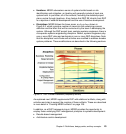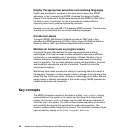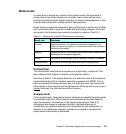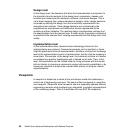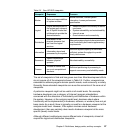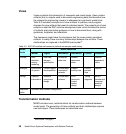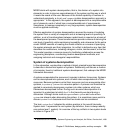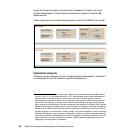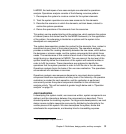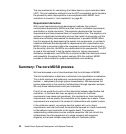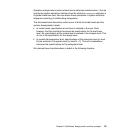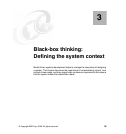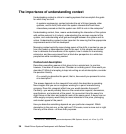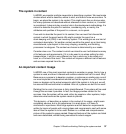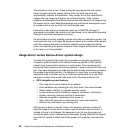
Chapter 2. Definitions, design points, and key concepts 31
In MDSD, the techniques of use case analysis are extended to operations
analysis. Operations analysis consists of the following recursive pattern:
1. Decompose the system to create a context for the system elements.
2. Treat the system operations as use case scenarios for the elements.
3. Describe the scenarios in which the elements, as black boxes, interact to
realize the system operations.
4. Derive the operations of the elements from the scenarios.
This pattern can be applied starting at the enterprise, which contains the system
of interest (hence the context level for the MDSD framework). In this application
of the pattern, the enterprise is treated as a system and the system to be
developed as a component.
9
The system decomposition creates the context for the elements; thus, context is
maintained at every level of the system hierarchy. The operations analysis
provides a method for creating traceability between the use cases, which define
the business or mission needs, and the system components that satisfy those
needs. The maintenance of this context at each level of the hierarchy was a key
insight during our development of MDSD. The use cases at the top level of the
system hierarchy define the interactions of the system with external entities in
order to fulfill its mission. These interactions are analyzed to identify the
operations that the system provides in order to fulfill its role in the use cases.
Operations analysis forms the basis of the use case realization. The operations
are combined into interfaces or services.
Operations analysis uses sequence diagrams to recursively derive system
component black-box requirements at every level of the hierarchy. An operation
realization is created for each operation, and the realization is performed
concurrently across the system components identified in the architectural
analysis activity. This will be treated at greater length below and in “Operation
analysis” on page 72.
Joint realization
In developing the system model, use cases are written, system components are
defined, and the interactions between the components are described. This is
standard practice for modeling a system. For large-scale developments, we must
design across multiple viewpoints concurrently, distributing functionality to the
various pieces of the system. We also decompose the system, divide and
suballocate the requirements, and develop links for traceability purposes.
9
This is elaborated in chapters 3 and 4.



